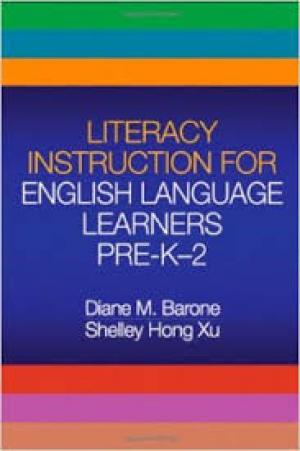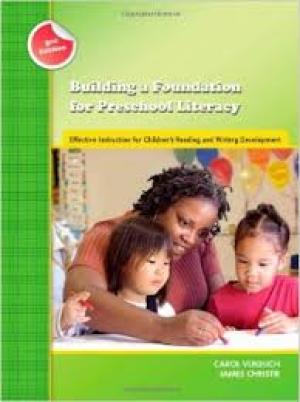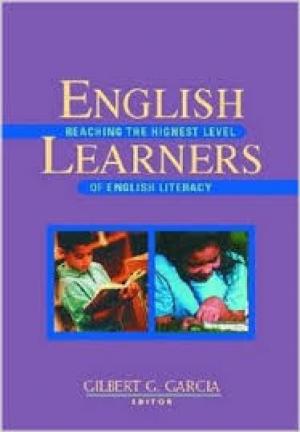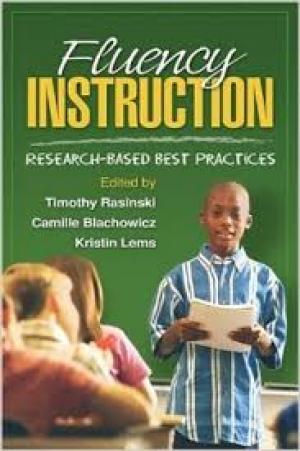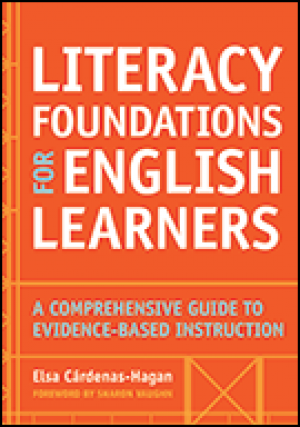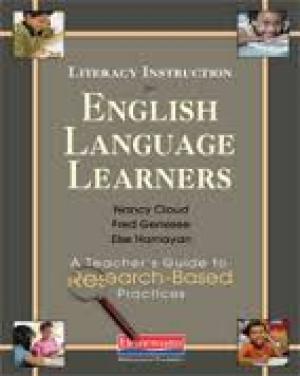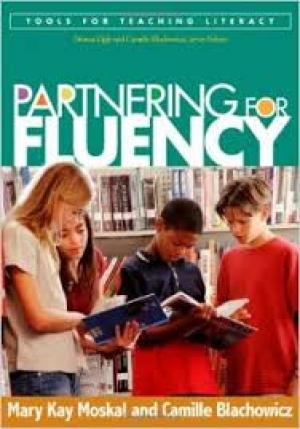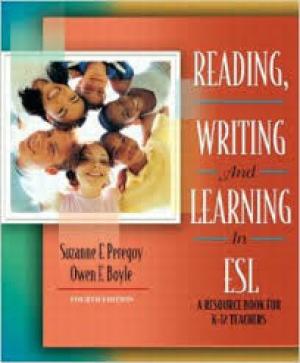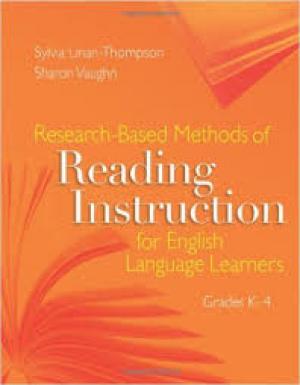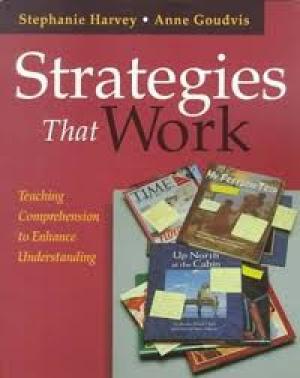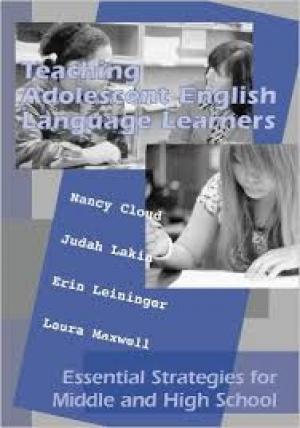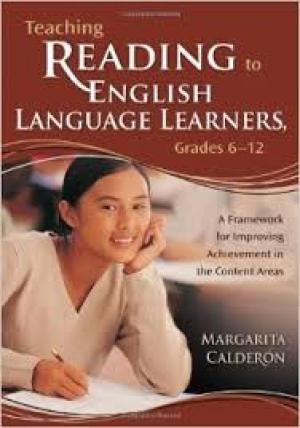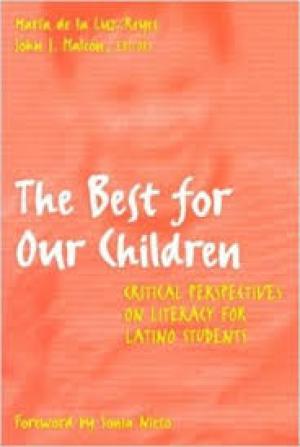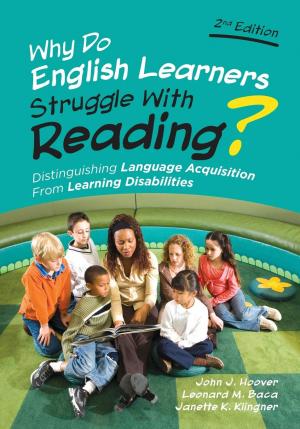Reading Instruction for ELLs

These books offer a number of practical research-based strategies for ELL reading instruction at different ages and proficiency levels, including ideas for lesson plans and assessments.
Literacy Instruction for English Language Learners: PreK-2
This book is a must-have for anyone who teaches ELLs in Pre-K through second grade. Each chapter is packed with practical, research-based strategies that teachers can immediately put to use in their own classrooms. The discussion focuses on working with ELL families, choosing appropriate instructional materials for ELLs, and effective instructional practices in: oral language development, assessment, writing, comprehension, spelling, vocabulary, and phonics.
Building a Foundation for PreSchool Literacy
Product Description: The second edition of this book presents the core content and best practice strategies needed to provide preschoolers with effective early literacy instruction. Each chapter explains why the instructional strategies should be used and offers illustrations on how the strategies have been used in early childhood classrooms by outstanding teachers of language and literacy. Topics include phonological awareness, creating a print-rich environment, planning an effective daily schedule, storybook read-alouds, professional development, and assessment.
English Learners: Reaching the Highest Level of English Literacy
This book examines three important ELL issues: English reading instruction in an immersion setting, English language development, and cultural issues as they pertain to ELLs in and out of the classroom. Readers will discover new ways of looking at practice in the context of current English literacy instruction for ELLs, suggestions for why we need to examine our current practice, and recommendations for what we can do to change it. The authors emphasize the importance of cultural heritage and celebrate the variety of voices that our ELLs represent.
Fluency Instruction: Research-Based Best Practices
This text brings together experts in the field of fluency research and practice to discuss what is an often-overlooked component skill of reading. The book is divided into three sections. The first offers a very accessible discussion of fluency theory and research, including an introductory chapter on the history of fluency research. The second section of the book, which is devoted to effective fluency teaching, has descriptions of a variety of programs and practices that are based in sound research.
Literacy Assessment of Second Language Learners
Product Description: Literacy Assessment of Second Language Learners consists of articles written specifically for this book by national and international experts and teachers in the field of literacy/bilingual assessment. The authors include assessment instruments, such as grading rubrics and observation checklists; classroom vignettes at the beginning of each chapter that integrate theory and practice; and numerous pedagogical devices such as charts, graphs, and summaries to make the book easy to use for readers.
Literacy Foundations for English Learners
This accessible book will give teachers the knowledge base they need to help English learners develop strong literacy skills and achieve academic success. Aligned with IDA's Knowledge and Practice Standards, this book prepares current and future educators to teach English learners the key components of language and literacy, as first described in the National Literacy Panel report.
Literacy Instruction for English Language Learners
In this must-read guide, experts Nancy Cloud, Fred Genesee, and Else Hamayan lay out a research-based yet practical and accessible approach to reading and writing instruction for ELLs. Designed for ELL teachers, mainstream teachers, and reading specialists, the book offers an excellent foundation on what we know about literacy development in ELLs before offering numerous classroom strategies on topics such as: emergent literacy in a second language; helping ELLs become biliterate; academic language and literacy; connecting reading and writing; and assessment.
Month-by-Month Phonics for Upper Grades: A Second Chance for Struggling Readers and Students Learning English
This book, highly recommended by upper elementary, middle, and high school teachers, offers monthly activities, sample lessons, and word lists to help students become fluent decoders and spellers. Students will learn how to apply reading and writing strategies through age-appropriate strateges.
Partnering for Fluency
This volume, which is part of the Tools for Teaching Literacy series, provides a wealth of research-based, classroom-tested strategies for teaching reading fluency. Topics include fluency assessment, resources for fluency instruction, planning for instruction, and how to design staff development to encourage good fluency instruction.
Reading Comprehension: Strategies for Independent Learners
This practical but comprehensive guide to reading comprehension instruction begins with the question, "What do good comprehenders look like?" What follows are detailed descriptions of seven students, representing different ages and backgrounds, all of whom are skilled, successful readers. The authors use these descriptions as a basis for their definition of comprehension.
Reading, Writing, and Learning in ESL: A Resource Book for K-12 Teachers (4th edition)
This Fourth Edition of Peregoy & Boyle's text continues the strengths of the third with its comprehensiveness and accessibility, providing a wealth of practical strategies for promoting literacy and language development in English language learners (K-12). Unlike many texts in this field, Reading, Writing and Learning In ESL takes a unique approach by exploring contemporary language acquisition theory as it relates to instruction and providing suggestions and methods for motivating and involving ELL students.
Research-Based Methods of Reading Instruction for English Language Learners: Grades K-4
This practical and accessible guide is organized around the five key components of reading instruction. The authors begin each section with a clear description of why instruction in that particular component is important and what that instruction should look like. The book includes descriptions of more than 60 lessons that can be adapted for many different levels of instruction, as well as a very useful glossary of terms related to literacy and English language learning.
Strategies That Work: Teaching Comprehension to Enhance Understanding
Reading implies thinking and understanding, and teachers can help children develop strategies for comprehension. Children need to know how to make connections and ask questions, how to visualize and infer, how to extract important ideas and to synthesize information if they are to become fluent readers. Stephanie Harvey and Anne Goudvis show how teachers can model these strategies by thinking aloud and coding the text, lifting text onto the overhead and reasoning through it in class discussions, and bringing in their own books to model how adults use these strategies.
Teaching Adolescent English Language Learners: Essential Strategies for Middle and High School
This guide provides excellent, detailed information about the day-to-day challenges that secondary ELLs & their teachers face, from mastering academic language and content to navigating graduation requirements. Filled with strategies for language, literacy, and content instruction, the book also provides helpful information about social and emotional needs of adolescent ELLs, effective guidance counseling, and supporting ELLs in the mainstream classroom.
Teaching Reading to English Language Learners: Grades 6-12
In this guide, literacy expert Margarita Calderón offers a number of strategies for teaching reading at the upper grades, including vocabulary development, comprehension, and reading in the content areas. She provides a number of hands-on examples throughout the text, and addresses the challenges of teaching basic literacy skills to older students.
The Best for Our Children: Critical Perspectives on Literacy for Latino Students
In this intriguing text, Reyes and Halcón present the perspectives of prominent Latino researchers and educators on issues related to literacy development for PreK-12 Latino students. The focus throughout is on the critical need for learning environments in which Latino students' culture and language are respected and nurtured. What makes this volume unique is that each of the authors can draw upon his or her own personal experience in discussing such topics as bilingualism and biliteracy, engaging adolescent readers, and academic underachievement.
Why Do English Language Learners Struggle With Reading?: Distinguishing Language Acquisition From Learning Disabilities (2nd Edition)
Product Description: This research-based guide offers educators proven methods for determining when English language learners (ELLs) are having reading difficulties that are related to the language acquisition process and when students' performance issues might be linked to learning disabilities. An excellent resource for general and special education teachers and service providers, the text provides an overview of the language acquisition process and offers a variety of best practices to prevent inappropriate referrals of ELLs to special education.
Related Content
Multicultural Literature
See more great related resources and videos in our Multicultural Literature section!

